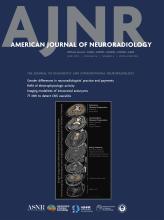Case of the Week
Section Editors: Matylda Machnowska1 and Anvita Pauranik2
1University of Toronto, Toronto, Ontario, Canada
2BC Children's Hospital, University of British Columbia, Vancouver, British Columbia, Canada
Sign up to receive an email alert when a new Case of the Week is posted.
March 9, 2017
Transmodiolar Intralabyrinthine Schwannoma
- Background:
- Intralabyrinthine schwannomas (ILS) are uncommon lesions, and they are underreported causes of sensorineural hearing loss.
- To date, less than 200 cases have been reported.
- With higher field magnets and refined MR imaging sequences, the sensitivity of detection of ILS has increased; therefore, the reported prevalence of the disease has also increased.
- Clinical Presentation:
- Sensorineural hearing loss, vertigo, tinnitus
- ILS can be classified according to the inner ear structures involved, namely intracochlear (tumor confined to the cochlea), transmodiolar (tumor extending from cochlear modiolus into IAM), intravestibular (tumor centered in the vestibule/semicircular canal), transmacular (tumor centered in the vestibule extending into IAM), vestibulocochlear (tumor within vestibule and cochlea), or transotic (tumor within the labyrinth extending into middle ear).
- Key Diagnostic Features:
- Filling defect in cochlea/vestibule/semicircular canal on T2WI
- Homogenous enhancing mass on enhanced T1WI
- Differential Diagnoses:
- Labyrinthitis: There is no filling defect on T2WI.
- Labyrinthitis ossificans: There is loss of the normal high T2 signal, faint/diffuse and less well-defined enhancement on postcontrast images, and history of previous meningitis/otomastoiditis. When it is in the ossifying stage, a temporal bone CT can easily differentiate between the two entities.
- Treatment:
- ILS is a slow growing tumor and patients do not routinely undergo surgery because of the inevitability of complete hearing loss in the affected ear. Therefore, management is usually conservative with serial MR imaging.
- Surgery is only indicated for intractable vertigo or tumor growth from membranous labyrinth into IAM, or in those patients already presenting with complete hearing loss and symptoms due to local mass effect/compression.











